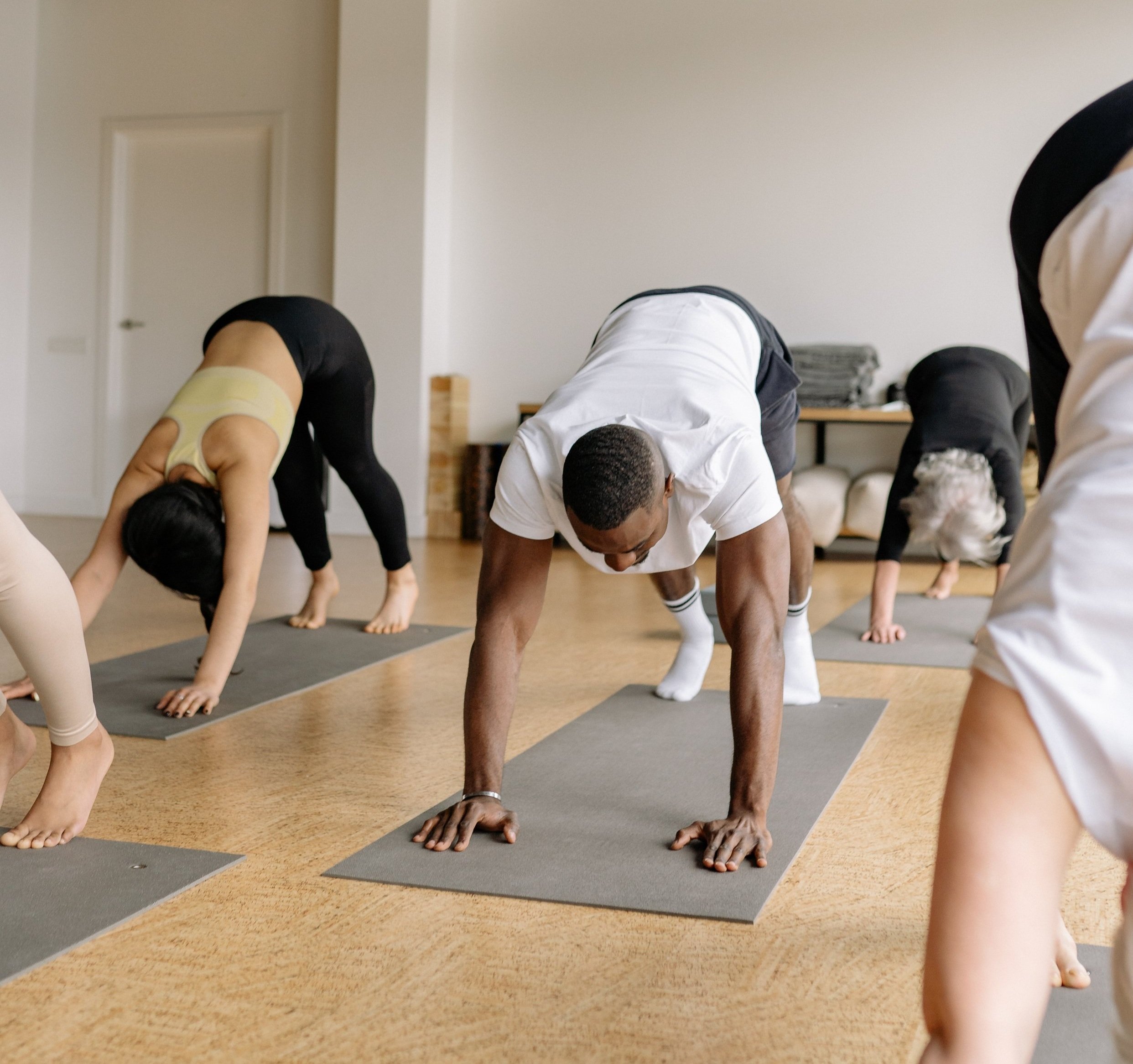Top 7 reasons Mysore style ashtanga yoga is great for beginners
Why I think Mysore style Ashtanga Yoga is the best yoga practice for beginners
As an ashtanga teacher, one of the things I hear most often from potential students is that they feel they can’t come to a Mysore-style ashtanga class because they don’t know the Ashtanga sequence or they don’t believe Mysore practice is for them.
Usually, it’s because they‘re new to yoga or they can’t see themselves doing some of the challenging yoga postures (asanas) often associated with the practice. I want to shed some light on these popular misconceptions and explain why, if you’re a beginner, Mysore-style ashtanga is a perfect place to start your yoga journey.
The reason I’ve had a daily ashtanga practice for so many years, and why I’m dedicated to sharing the practice with others, is I believe it really works.
In ashtanga, there are three points of attention (you might hear this called “tristhana”. These are breath, posture (asana), and looking place (drishti) and we always practice them together.
We combine the breath with movement in what is known as vinyasa (the dynamic moving technique where vinyasa flow classes get their name). The postures themselves are in a set sequence, so each posture prepares the body for the next. This way, we build strength and flexibility gradually. The looking place is just that: where we look in each posture.
When starting out, it’s not about doing advanced postures or building an intense practice. You’ll simply learn to do these things together: breath, move, and look. Over time, we develop more focus and a sense of awareness, which we can take into our daily lives.
Still not sure? Here are seven reasons why I think it’s a great practice for beginners and seasoned practitioners alike.
1 – In An Ashtanga Mysore Class you get one-to-one attention
In a Mysore-style ashtanga class, you’ll receive all the benefits of a one-to-one class in a group environment. On your first day, you’ll run through the three points of attention. Then you’ll learn a breathing and movement sequence known as sun salutations (surya namaskar); before closing with a short breathing practice.
This will form the basis of your practice. It will be taught in a way that’s appropriate for you and you can practice at a pace that suits you. If you’ve done some ashtanga before but don’t know the sequence, don’t fret. You don’t need to know it. The teacher will help you to repeat parts of it so you commit it to memory.
2 – Develop a personalised relationship with your Ashtanga teacher
At the start of your first class, you’ll meet your teacher. Take the time to tell them a little about your history, and mention if you have any injuries or previous yoga experience.
They’ll guide you through your practice on your first day, and over time will get to know you more and more. This personalised relationship means your teacher is available to answer questions and support and guide you based on your individual needs.
3 – Become part of a community Mysore Style Ashtanga Yoga Community
Ashtanga practitioners spend a lot of time together in the Mysore room. Even though the room is generally silent, you’ll get to know other practitioners and over time, through a shared connection to the practice, you’ll develop friendships and support systems.
4 – In Mysore Style Ashtanga Yoga you develop a self-sufficient practice
One of the amazing benefits is that Mysore-style ashtanga is a practice that can travel with you. From your very first class, you’ll have something memorised to ‘take away’. This means if you can’t make it to class or you’re travelling, you can still practice.
There are Mysore-style ashtanga classes all over the world and a network of global practitioners. This means you can drop into class while you’re travelling, do your regular practice and you’ll know exactly what to expect.
5 – You’ll Learn in a safe and progressive way
If we think back to the foundations of the practice; the three points of attention, it’s suitable for everyone. We are all different physically but the practice can meet us where we’re at. Personally, I’ve taught students from the ages of 20 up to 75, as well as those with limited mobility or a chair-based practice.
As long as the focus is on the three points of attention, anyone can benefit.
As we’ve already said, the practice builds on earlier postures in the sequence. This means if you do go on to learn the more challenging asanas your body will have gained the necessary flexibility and strength to do so safely. By this point, you’ll also have developed a relationship with your teacher and they’ll be able to help you carefully navigate this stage of your practice.
6 – Mysore Style Ashtanga allows you to be flexible with timings
Mysore-style ashtanga classes generally run for between two and four hours. You don’t have to arrive for the start time of the class or stay for its duration. Drop in when it suits you and stay for as long as you like. The aim is to cultivate regular practice, so even if you have 15 minutes each day, you’ll soon start to notice the benefits.
7 – Mysore style Ashtanga will allow you to go deeper into your practice
Because the room is silent, and we have the three points of attention to work with, we’re able to cultivate a deep sense of focus. The practice becomes a moving meditation and a container from which we can begin to develop a deeper understanding of ourselves.


